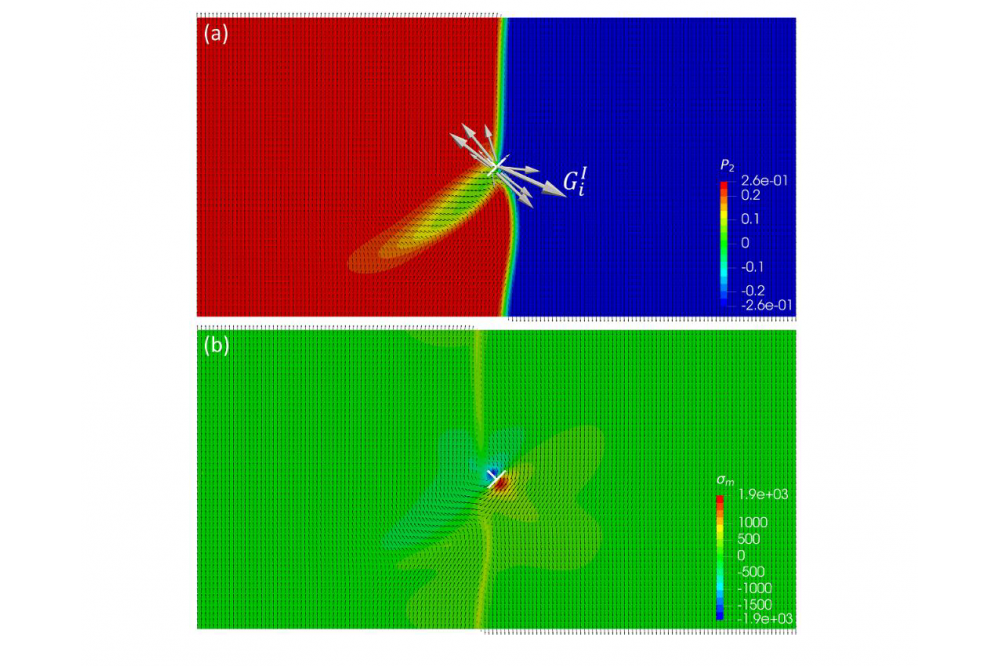Phase Field Simulation of Ferroelectrics and Antiferroelectrics
Einleitung
The electromechanical coupling properties of ferroelectric materials are widely studied and used to design macro and micro devices including actuators and sensors. It is determined by the domain structures in ferroelectrics, where uniform polarization in domains is separated by the domain wall. The domain wall moves when the electric field and stress loading activate polarization switching. Defects in ferroelectrics, such as space charges, dislocations, and crack tip can strongly affect the polarization switching because they are new nucleation sites of new domains. Due to the existence of defects, ferroelectric devices suffer from degradation, fatigue fracture, imprint, and aging effects. An in-depth understanding of domain walls interaction with defects is necessary for improving the performance of ferroelectric devices.
Methoden
Phase-field model is a very power tool to simulate the evolution of domain structures in ferroelectrics. The phase-field model is numerically implemented using finite element method. In order to study the driving forces on domain walls and on defects, we also developed the generalized configurational force theory based on the phase-field model. Finite element method is also used to simulate the driving forces on domain walls and defects based on the configurational force theory.
Ergebnisse
We have successfully simulated the evolution of domain structures in ferroelectrics. The results include:
1. driving forces on dislocation of various configurations (only elasticity).
2. domain structures with and without dislocation.
3. the interaction between the domain wall and dislocations, and the corresponding driving forces on the domain wall and dislocation.
Diskussion
The results of domain structure and driving force help on in-depth understanding of the electromechanical properties of ferroelectrics. In the future, the piezoelectricity of ferroelectric with and without dislocations will be studied in detail. 3D simulation will be carried out for more complex configurations in the study of the interaction between dislocations and ferroelectric domain structures.




